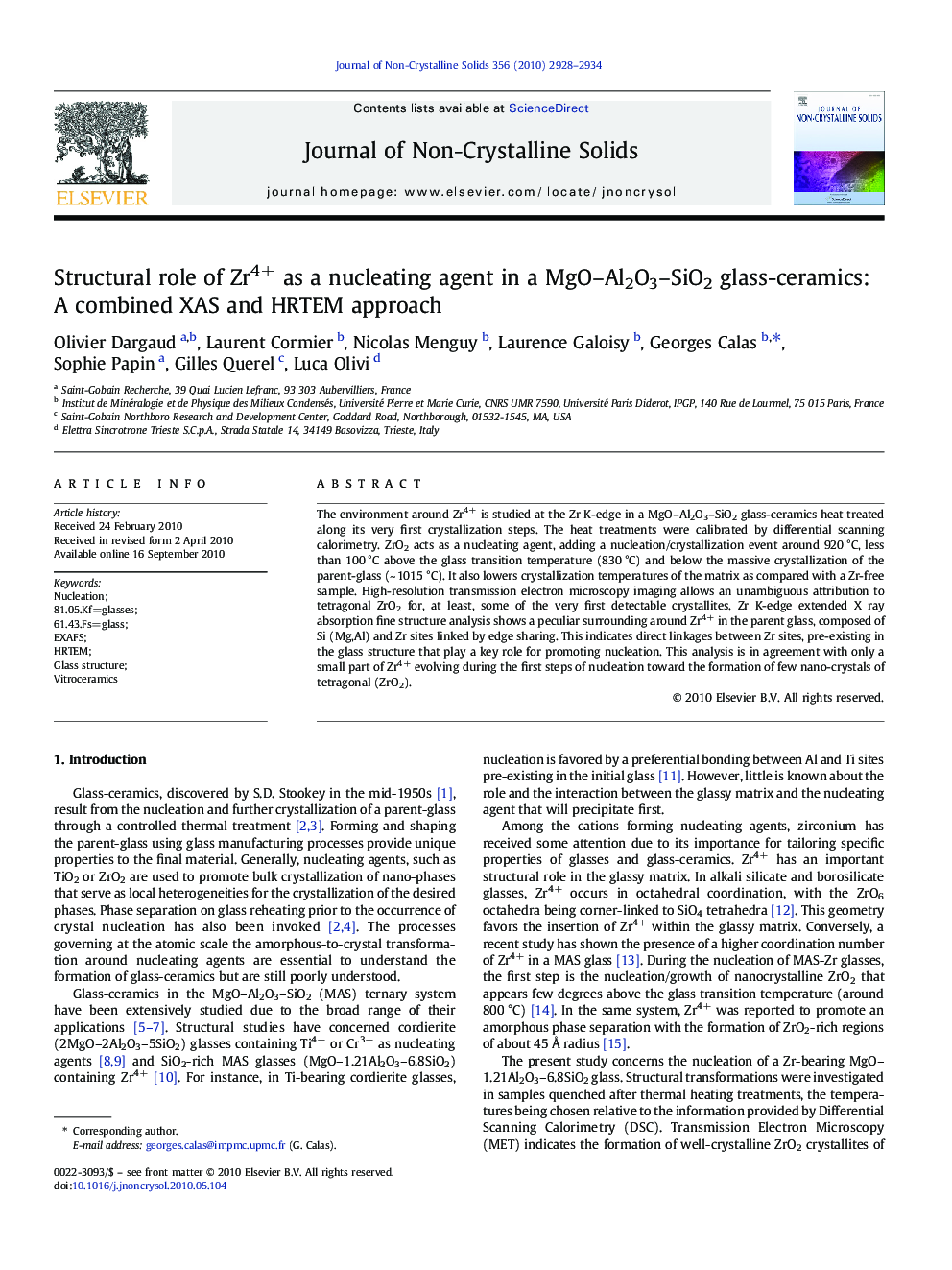| Article ID | Journal | Published Year | Pages | File Type |
|---|---|---|---|---|
| 1482611 | Journal of Non-Crystalline Solids | 2010 | 7 Pages |
The environment around Zr4+ is studied at the Zr K-edge in a MgO–Al2O3–SiO2 glass-ceramics heat treated along its very first crystallization steps. The heat treatments were calibrated by differential scanning calorimetry. ZrO2 acts as a nucleating agent, adding a nucleation/crystallization event around 920 °C, less than 100 °C above the glass transition temperature (830 °C) and below the massive crystallization of the parent-glass (~ 1015 °C). It also lowers crystallization temperatures of the matrix as compared with a Zr-free sample. High-resolution transmission electron microscopy imaging allows an unambiguous attribution to tetragonal ZrO2 for, at least, some of the very first detectable crystallites. Zr K-edge extended X ray absorption fine structure analysis shows a peculiar surrounding around Zr4+ in the parent glass, composed of Si (Mg,Al) and Zr sites linked by edge sharing. This indicates direct linkages between Zr sites, pre-existing in the glass structure that play a key role for promoting nucleation. This analysis is in agreement with only a small part of Zr4+ evolving during the first steps of nucleation toward the formation of few nano-crystals of tetragonal (ZrO2).
